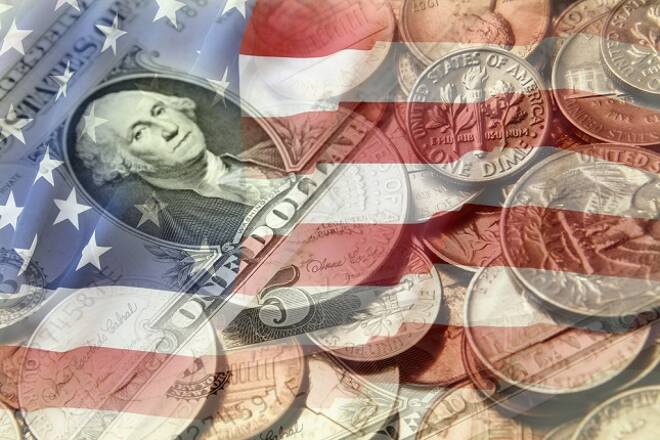Advertisement
Advertisement
Greenback Firms on Rising Treasury Yields, Safe-Haven Buying
By:
Strong domestic economic data helped underpin the dollar last week. Key reports included the ISM Manufacturing PMI, ISM Non-Manufacturing PMI, and Non-Farm Payrolls. Treasury yields jumped after the numbers were released and stocks were mixed on expectations the data justified more rate hikes from the Federal Reserve. Worries about escalating trade disputes continued to weigh on emerging markets including China, driving investors into the safety of the U.S. Dollar.
The U.S. Dollar finished slightly higher last week against a basket of currencies. The greenback rose against most major currencies with the exception of the Japanese Yen. Solid domestic economic data, rising Treasury yields and some safe-haven buying helped under the currency.
For the week, September U.S. Dollar Index futures settled at 95.365, up 0.282 or +0.30%.
Economic Data Impact
Strong domestic economic data helped underpin the dollar last week. Key reports included the ISM Manufacturing PMI, ISM Non-Manufacturing PMI, and Non-Farm Payrolls.
Activity in the U.S. manufacturing sector unexpectedly grew at a faster rate in the month of August, according to a report released by the Institute for Supply Management.
The ISM said its purchasing managers’ index climbed to 61.3 in August from 58.1 in July. Economists had expected the index to dip to 57.7.
“Demand is still robust, but the nation’s employment resources and supply chains continue to struggle,” said Timothy R. Fiore, Chair of the ISM Manufacturing Business Survey Committee.
“Respondents are again overwhelmingly concerned about tariff-related activity, including how reciprocal tariffs will impact company revenue and current manufacturing locations,” he added. “Panelists are actively evaluating how to respond to these business changes, given the uncertainty.”
The service sector also jumped in August. According to the Institute of Supply Management’s measure of the non-manufacturing sector for August came in at 58.5, blowing away expectations for a reading of 56.8 and following the 55.7 reading reported in the prior month.
“Logistics, tariffs and employment resources continue to have an impact on many of the respective industries,” the institute said in a statement. “Overall, the respondents remain positive about business conditions and the economy.”
It was a banner day on Friday for investors betting on higher interest rates given the solid U.S. jobs data for August. The headline number showed nonfarm payrolls grew by 201,000. The unemployment rate held near a generational low of 3.9 percent and average hourly earnings rose 2.9 percent for the month on an annualized basis. Economists were looking for payrolls to rise by 191,000, the jobless rate to dip one-tenth of a point to 3.8 percent and earnings to rise 2.7 percent.
Rising Yields Make Dollar More Attractive Investment
Treasury yields jumped after the numbers were released and stocks were mixed on expectations the data justified more rate hikes from the Federal Reserve.
With average hourly earnings increasing 10 cents for the month to $27.16, market participants widely expect the Fed to hike its benchmark rate another quarter point in September and likely to add one more increase in December. This news helped drive up the dollar because of the divergence in monetary policy between the hawkish U.S. Federal Reserve and the other dovish major central banks.
Dollar Supported by Safe-Haven Demand, Weak Emerging Markets
Worries about escalating trade disputes continued to weigh on emerging markets including China, driving investors into the safety of the U.S. Dollar.
President Trump said Friday the U.S. is ready to slap tariffs on an additional $267 billion worth in Chinese goods. He make this remark after a deadline for comments regarding tariffs on another $200 billion in Chinese goods had expired late Thursday.
The Wall Street Journal also reported, citing U.S. officials, that the possibility of the U.S. and China reaching a trade deal are fading as the Trump administration tries to revamp NAFTA. Additionally, Bloomberg News reported that the U.S. and Canada will likely end the week with no trade deal in place.
About the Author
James Hyerczykauthor
James Hyerczyk is a U.S. based seasoned technical analyst and educator with over 40 years of experience in market analysis and trading, specializing in chart patterns and price movement. He is the author of two books on technical analysis and has a background in both futures and stock markets.
Advertisement
